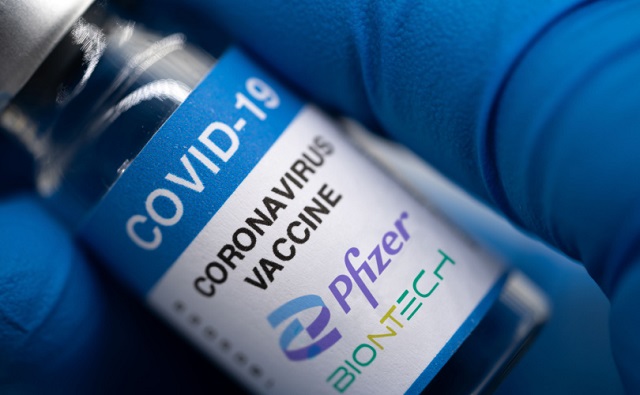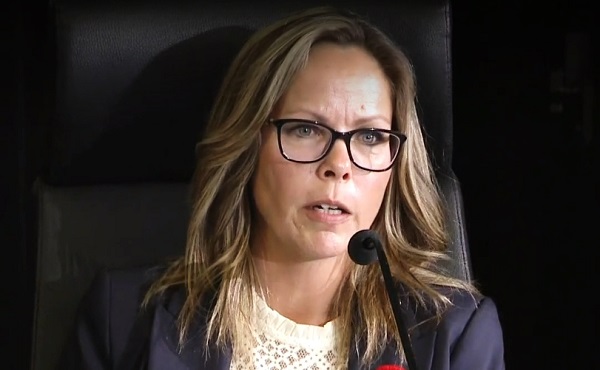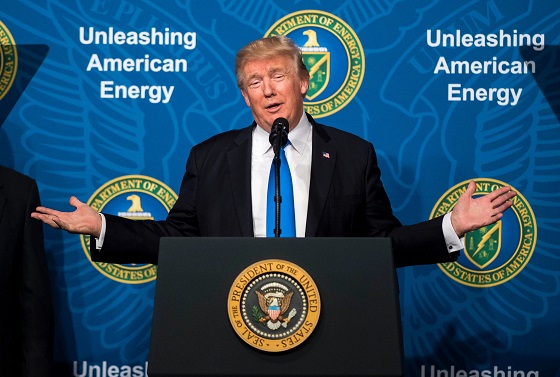COVID-19
Health Canada has no clinical data on its ‘thorough’ review approving Pfizer’s latest COVID shot

From LifeSiteNews
‘Only non-clinical data was supplied to Health Canada to support the market authorization of the herein product’
An information request from a federal MP asking Health Canada if it has any clinical data showing whether Pfizer-BioNTech’s latest COVID jab is effective and safe after its recent approval of the shot has revealed the agency has no such data on file.
The Ministry of Inquiry request was made by NDP MP Don Davies on October 25 and was replied to on December 11 by the Ministry of Health and its minister, Mark Holland.
Health Canada had claimed that it conducted a “thorough” review before it authorized Pfizer-BioNTech’s Comirnaty Omicron XBB.1.5 as well as Moderna’s Spikevax XBB.1.5 injections.
However, according to the information in the inquiry of the ministry, Health Canada is still waiting on information from Pfizer regarding clinical data.
“Pfizer-BioNTech is conducting a similar clinical trial with COMIRNATY Omicron XBB.1.5 vaccine, the results of this study will be submitted to Health Canada in response to Terms and Conditions issued as part of the approval of this vaccine,” the health regulator said.
The regulator added that the “Immunogenicity and safety data will be provided as part of the terms and conditions of the authorization.”
Health Canada’s regulatory decision summary regarding the approval of Pfizer-BioNTech’s COVID shot reads, “Only non-clinical data was supplied to Health Canada to support the market authorization of the herein product.”
The agency said in a statement at the time regarding the approval of Pfizer-BioNTech’s COVID jab, “After a thorough and independent review of the evidence, Health Canada has determined that the vaccine meets the Department’s stringent safety, efficacy and quality requirements.”
The agency gave no safety or effectiveness data to prove it the claim, however.
Of note is that Pfizer-BioNTech’s COVID jab only is said to target an COVID variant, XBB.1.5, which is all but gone in Canada. As of now, the dominant strain is EG.5.
Health Canada approved a revised Moderna mRNA-based COVID shot in September, and later the Pfizer-BioNTech’s COVID jab, despite research showing that 1 in 35 recipients of the booster have myocardial damage.
However, the agency did get back information from Moderna regarding its jab.
Health Canada claims that the mRNA shots are “well understood” because millions of people have had them. The agency also claims that the safety and effectiveness of Pfizer’s latest XBB.1.5 injection comes from studies done on its previous mRNA shots.
The latest data shows 5.6 million Canadians have had the XBB.1.5 injection.
Issues with Pfizer go back to 2020
The federal government under Prime Minister Justin Trudeau knew that the jabs could carry unknown risks when they signed the contract with Pfizer in late 2020. The government had to acknowledge by signing the contract that the COVID shot and its materials were “rapidly developed due to the emergency circumstances of the COVID-19 pandemic” and would be further studied after their rollout.
Last month, LifeSiteNews reported on how the recently disclosed federal government’s COVID-19 vaccine contract with Pfizer for millions of doses of the mRNA-based experimental shots shows the government agreed to accept the unknown long-term safety and efficacy of the shots.
Health Canada ordered 238 million COVID injections from Pfizer Canada, which includes 30 million for 2023 and 2024.
The details of the Pfizer contract do not disclose how much the government spent on the jabs.
The Trudeau government, with the help of the Department of Health, heavily promoted the COVID jabs, which were rushed to market. It is still promoting the shots, this time the recently approved booster.
There is mounting evidence concerning the adverse effects they cause in many who have taken the COVID shots, including kids.
For example, a recent study done by researchers with Canada-based Correlation Research in the Public Interest showed that 17 countries have found a “definite causal link” between peaks in all-cause mortality and the fast rollouts of the COVID shots as well as boosters.
LifeSiteNews recently wrote about how a newly released government report shows that deaths from both COVID-19 and “unspecified causes” surged after the release of the so-called “safe and effective” vaccines.
LifeSiteNews reported last month how the Polyomavirus Simian Virus 40 (SV40), which is a monkey-linked DNA sequence known to cause cancer when it was used in old polio vaccines, has been confirmed by Health Canada to be present in the Pfizer COVID shot, a fact that was not disclosed by the vaccine maker to officials.
COVID-19
Crown still working to put Lich and Barber in jail

From LifeSiteNews
The Crown’s appeal claims the judge made a mistake in her verdict on the intimidation charges, and also in how she treated aggravating and mitigating factors regarding sentencing.
Government lawyers for the Crown have filed an appeal the acquittals of Freedom Convoy leaders Tamara Lich and Chris Barber on intimidation charges.
The Crown also wants their recent 18-month conditional sentence on mischief charges replaced with harsher penalties, which could include possible jail time.
According to the Justice Centre for Constitutional Freedoms (JCCF), it is “asking the Ontario Court of Appeal to enter a conviction on the intimidation charge or order a new trial on that count,” for Barber’s charges.
Specifically, the Crown’s appeal claims that the judge made a mistake in her verdict on the intimidation charges, and also in how she treated aggravating and mitigating factors regarding sentencing.
As reported by LifeSiteNews, both Lich and Barber have filed appeals of their own against their house arrest sentences, arguing that the trial judge did not correctly apply the law on their mischief charges.
Barber’s lawyer, Diane Magas, said that her client “relied in good faith on police and court direction during the protest. The principles of fairness and justice require that citizens not be punished for following the advice of authorities. We look forward to presenting our arguments before the Court.”
On October 7, Ontario Court Justice Heather Perkins-McVey sentenced Lich and Chris Barber to 18 months’ house arrest after being convicted earlier in the year of “mischief.”
Lich was given 18 months less time already spent in custody, amounting to 15 1/2 months.
Lich and Barber were declared guilty of mischief for their roles as leaders of the protest against COVID mandates in April 2022, and as social media influencers. The conviction came after a nearly two-year trial despite the non-violent nature of the popular movement.
The Lich and Barber trial concluded in September 2024, more than a year after it began. It was originally scheduled to last 16 days.
As reported by LifeSiteNews, the Canadian government was hoping to put Lich in jail for no less than seven years and Barber for eight years.
LifeSiteNews recently reported that Lich detailed her restrictive house arrest conditions, revealing she is “not” able to leave her house or even pick up her grandchildren from school without permission from the state.
As reported by LifeSiteNews, Lich, reflecting on her recent house arrest verdict, said she has no “remorse” and will not “apologize” for leading a movement that demanded an end to all COVID mandates.
COVID-19
Freedom Convoy leader Tamara Lich to appeal her recent conviction

From LifeSiteNews
Lawyers will argue that there is no evidence linking Tamara Lich ‘to the misdeeds of others.’
Freedom Convoy leader Tamara Lich said she will appeal her recent mischief conviction in an Ontario court, with her lawyers saying “there was no evidence linking her to the misdeeds of others.”
In a press release late yesterday, Lich’s legal team, headed by Lawrence Greenspon, Eric Granger, and Hannah Drennan, made the announcement.
“Lawyers for Tamara Lich filed Notice of Appeal in the Ontario Court of Appeal of the conviction for mischief arising out of the Freedom Convoy,” the release stated.
Lich’s legal team noted that there are two reasons for the principal grounds of appeal.
“While there was substantial evidence that Tamara encouraged the protesters to be peaceful, lawful and safe, there was no evidence linking her to the misdeeds of others,” they said.
The second reason for the appeal, according to Lich’s lawyers, is that the “trial judge failed to give effect to the principle that communication that would otherwise be mischief is protected by section 2(b) of the Charter, freedom of expression.”
On October 7, Ontario Court Justice Heather Perkins-McVey sentenced Lich and Chris Barber to 18 months’ house arrest after being convicted earlier in the year of “mischief.”
Lich was given 18 months less time already spent in custody, amounting to 15 1/2 months.
As reported by LifeSiteNews, the Canadian government was hoping to put Lich in jail for no less than seven years and Barber for eight years for their roles in the 2022 protests against COVID mandates.
Interestingly, Perkins-McVey said about Lich and Barber during the sentencing, “They came with the noblest of intent and did not advocate for violence.”
As reported by LifeSiteNews, Lich, reflecting on her recent sentencing of over a year’s house arrest for her role in the 2022 Freedom Convoy, laid bare the fact that when all is said in done, seven years of her life will have been spent in a government-imposed “lockdown” in one form or another.
LifeSiteNews recently reported that Lich detailed her restrictive house arrest conditions, revealing she is “not” able to leave her house or even pick up her grandkids from school without permission from the state.
As reported by LifeSiteNews, Lich, reflecting on her recent house arrest verdict, said she has no “remorse” and will not “apologize” for leading a movement that demanded an end to all COVID mandates.
-

 Business2 days ago
Business2 days agoCarney’s Deficit Numbers Deserve Scrutiny After Trudeau’s Forecasting Failures
-

 Business2 days ago
Business2 days agoHere’s what pundits and analysts get wrong about the Carney government’s first budget
-

 International2 days ago
International2 days agoKazakhstan joins Abraham Accords, Trump says more nations lining up for peace
-

 Alberta1 day ago
Alberta1 day agoTell the Province what you think about 120 km/h speed limit on divided highways
-

 Business2 days ago
Business2 days agoCarney budget doubles down on Trudeau-era policies
-

 Automotive2 days ago
Automotive2 days agoElon Musk Poised To Become World’s First Trillionaire After Shareholder Vote
-

 National14 hours ago
National14 hours agoNew Canadian bill would punish those who deny residential indigenous schools deaths claims
-

 Business1 day ago
Business1 day agoBill Gates Gets Mugged By Reality




